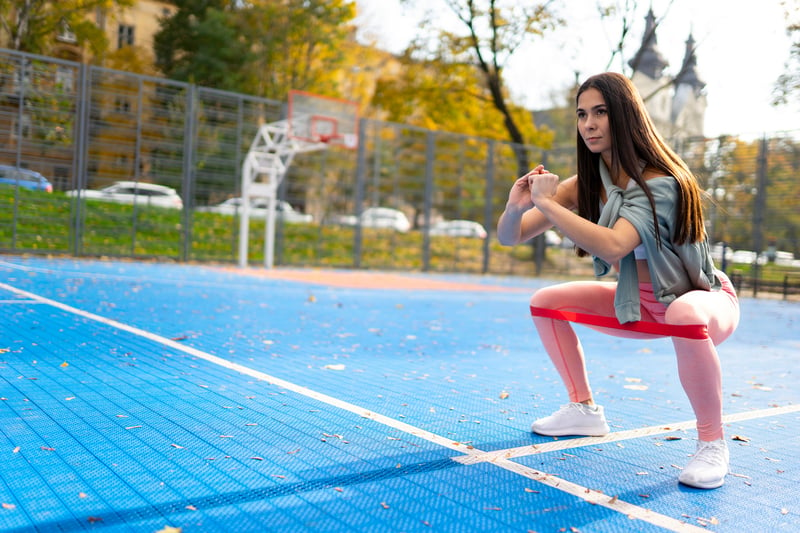5 Popular Workouts That Offer Little to No Benefits

Don’t believe the hype! Getting in any type of workout almost always seems like a great idea, but did you know that some of the most popular workouts or exercises offer little to no benefits? It’s true. If you find yourself doing these on the regular—especially if you’re only doing these workouts—it may be time to switch things up.
How Do You Know if a Workout is Beneficial?
Just because “everybody is doing it” or you see influencers performing certain movements doesn’t mean it’s a good exercise or even a safe one. Sometimes folks are just trying to reinvent the wheel, be relevant, or appear new and innovative. So, they come up with movements that are both worthless and potentially injurious.
Before you follow any of these trends, make sure you check out the workouts for yourself to ensure you are doing something that legitimately will further your fitness.
How do you know if your workouts are working?
- You should see results—if you have been doing the same movements over and over for months and you don’t see any changes in your physique, chances are good that it might not be effective for you.
- You’ve made no progress—if you’re still lifting the exact same weight for the same number of reps that you were doing months ago, you haven’t made any progress. The goal of resistance training is to get stronger, and you do that using what’s called progressive overload. That means you’ll be adding weight, repetitions, or reducing rest time repeatedly each time you do the workout. You’re aiming to force your body into changing because you keep making things harder, not into adapting to a workout that never changes.
- You’re getting pains, strains, and injuries that you haven’t had before—if new stuff starts hurting after you’ve been doing certain movements, it might not be an effective (or safe) muscle-building exercise for you. Try switching up the workout for something more tried and true and see if these nagging pains subside.
5 Workouts That Offer Little Benefits
1. Dumbbell Shadow Boxing While Walking
This is pretty much never a good idea. Why? You’re likely straining shoulder and forearm muscles, and you’re throwing your body off balance while walking. This can cause a host of other issues as your body tries to balance and compensate for this movement. If you’re trying to intensify your cardio, there’s a better way.
Here’s What to Do Instead:
Raise the Incline—this is a much more effective way to intensify your walking workout. Try starting with a Level 3 incline and keep your speed around 3.0 mph. Work your way up to greater inclines and/or speeds over time. And don’t hold onto the handles unless you want to negate the entire purpose of the workout!
2. Abduction Machine for Working Glutes
This is pretty much never a good idea. Why? Because you’re not actually working your glutes when you perform this movement on this type of machine.
Why don’t these exercises do the job? First, if you’re using the adduction/abduction machine for glutes, you probably don’t realize you’re mostly stressing the piriformis muscle. This is a small muscle that helps externally rotate your hips. Yes, when it gets strained (which is easy to do) you will feel pain deep within the butt muscles, but that’s not the glutes that are sore… it’s the piriformis feeling beat up.
Here’s What to Do Instead:
Glute Thrusts—you can use a machine for these if your fitness facility is equipped with such. Or, sit with your lower back on the side of a bench (or couch at home) with your knees bent and feet flat on the floor. Place a barbell across your hips or hold a dumbbell on the front of each hip bone and slowly, in a controlled fashion, lift and lower your hips for 10 repetitions. Be sure to hold and squeeze your glutes at the top of each rep.
3. Bent-Over Cable Pull Throughs
You’ll also see this exercise a lot where folks will face away from the cable machine with a wide foot stance. They’ll lean over, reach between and behind their legs, and grab the cable/rope. Then, they’ll straighten their backs and stand, effectively pulling the rope up and between the legs. The idea is to work the glutes and hamstrings and maybe back, but that’s not what’s happening.
Why doesn’t this work? Doing workouts that involve pulling a rope through your legs or kneeling squats with a barbell on a Smith machine are ineffective. Why? Your hips are not hinging properly to work the glute or hamstring muscles. You are simply bending forward and backward without using your glutes to perform the movement and at best just getting a good stretch.
Here’s What to Do Instead:
Leg Curls—you will find leg curl machines at virtually every gym: either lying leg curl machines, seated machines, or even standing single leg curl machines. Do these and focus on really squeezing the hamstring and glute to move the weight. Perform the reps slowly and make each one count.
LIMITED TIME OFFER: Get Ageless Turmeric, Our Highly-Bioavailable Turmeric & Ginger Supplement, As Low As $14
4. Wide-Stance Exercises with Resistance Bands
You’ll see these types of exercises when people are trying to tone or build the glutes: wide-stance leg presses, squats, goblet squats, squats, side lunges, and everything else with a band around the knees.
Why can this be harmful or ineffective? Doing everything in a wide stance or banded will take away from the work you’re trying to get the glutes to do. The banded wide stance will force you to rely more heavily on your deep external rotator muscles in the hips and can cause all kinds of problems with overuse, including piriformis pain and tight IT bands (leading to knee pain).
Here’s What to Do Instead:
Lunges—you can effectively work your entire leg with lunges. Try doing lunges both with and without added weight. Walking lunges (where you lunge with one foot after the other, moving across space) are particularly good at helping to shape the glutes, hamstrings, and quadriceps. Plus, they’re tough to do so you’ll burn a lot of calories at the same time.
5. BOSU Ball Exercises for Everything
You’ve seen it many times: folks doing all kinds of exercises while standing or otherwise balancing on a BOSU ball.
Why is this not such a great exercise? In a word, instability. The instability won’t allow you to lift or press as much weight as you normally would and you’ll be engaging supporting stabilizing muscles and tendons to an unhealthy degree.
Here’s What to Do Instead:
Do Single Side Training—you don’t have to work out on an unstable surface to get stability and balance improvement. Simply working one side of the body at a time will force your body to stabilize and gently strengthen the muscles and tendons over time. Plus, you’ll be able to work on correcting imbalances and weaknesses as you work each side separately.
The bottom line is to not follow everything you see, even if it’s on social media or being done by personal trainers in your own gym. Investigate workouts for yourself. Do a little research to see if it’s actually an effective movement before joining the bandwagon on these (and other) ineffective workouts. And remember, not every movement is all bad. You just don’t want to rely on these less-effective workouts exclusively if your goal is to stay healthy and make progress.




 US Doctor: "Eating This Every Day Can Snap You Into Ketosis"
US Doctor: "Eating This Every Day Can Snap You Into Ketosis" 3 Key Nutrients to Help Lubricate Your "Tin Man" Joints
3 Key Nutrients to Help Lubricate Your "Tin Man" Joints AVOID Plant-Based Protein Powders (unless...)
AVOID Plant-Based Protein Powders (unless...)

